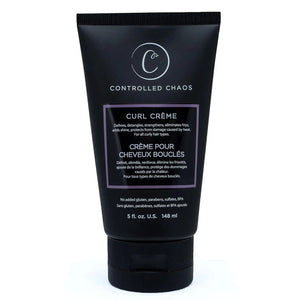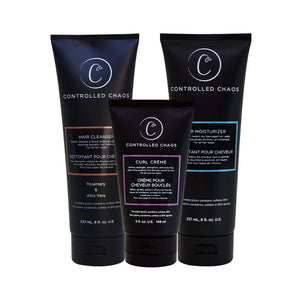

Curly hair, while beautiful and prone to damage. It can become dry and unhealthy without proper care, losing its natural bounce. If you're dealing with unhealthy hair, you can restore its health with the correct techniques and habits. Here's a comprehensive guide on how to fix unhealthy curly hair.

Hydration Is Key
You should always start with hydrating your hair. It is the crucial step one should take for their curly hair. To fix this, make hydration the cornerstone of your hair care routine.
-
Deep Conditioning: Incorporate deep conditioning treatments at least once a week. Look for rich, hydrating conditioners that can penetrate deeply into your curls.
-
Use Water-Based Products: Water is a curl’s best friend. Regularly spritz your hair with water or use leave-in conditioners with a water base. Water's hydration helps your curls maintain their shape and softness.
-
Avoid Hot Showers: Hot water strips your hair of essential moisture. Opt for lukewarm water instead, and always finish with a cold rinse to lock in moisture.
Use Protective Styles
Protective styles can reduce the amount of manipulation and stress on your curls. Styles like braids, twists, or buns help protect your hair from the elements, reduce breakage, and preserve moisture.
-
Switch to Silk or Satin Pillowcases: Cotton pillowcases can absorb moisture and create friction, which leads to frizz and breakage. Sleeping on silk or satin pillowcases reduces friction, helping your curls stay intact and moisturized.
-
Use Hair Coverings: If you don’t want to switch pillowcases, you can sleep with a satin bonnet or scarf to achieve similar results.
Learn Your Hair’s Porosity
Understanding your hair’s porosity can be a game-changer when fixing unhealthy curly hair. Hair porosity refers to how well your hair absorbs and retains moisture, which can be low, medium, or high.
-
Low-Porosity Hair: Lightweight products that don’t sit on the hair's surface are ideal for low-porosity hair. When applying deep conditioners, you can also use heat (like a warm towel) to help open the cuticles and allow moisture in.
-
High-Porosity Hair: High-porosity hair absorbs moisture quickly but loses it just as fast. This often happens due to damage to the hair cuticle from chemical treatments, heat, or environmental stressors. To prevent moisture loss, thicker, more hydrating products that lock in moisture and sealing oils are beneficial for high-porosity hair.
-
Medium-Porosity Hair: Medium-porosity hair strikes a balance between moisture absorption and retention. Maintaining this healthy balance requires regular conditioning and avoiding harsh chemicals or heat.
Be Patient with Your Hair’s Recovery
When hair is unhealthy, the recovery process takes time. There’s no quick fix for intensely curly dead hair. However, with patience and consistent care, hair will gradually regain strength.
-
Set Realistic Goals: If your hair has experienced severe damage, setting realistic expectations is essential. For some, it might take weeks or months of proper care to reverse the damage completely.
-
Stay Consistent: Consistency is key in any hair care routine. To help your curls stay healthy long-term, follow a regimen that includes regular conditioning and protective styling.
Avoid Overloading of Products
While moisturizing and protective products are essential for curly hair, overloading your curls with too many can weigh them down, cause build-up, and reduce their natural volume and shine.
-
Less is More: A small amount of product can go a long way for curly hair. Start with a minimal amount and gradually add more if necessary. Using less product can cause your curls to become greasy or heavy, losing their definition.
-
Clarify Your Hair: Product buildup is a common issue with curly hair, as various oils, gels, and creams can accumulate on the hair shaft over time. To avoid this, incorporate a clarifying shampoo into your routine once a month or as needed. Clarifying shampoos help remove product buildup, dirt, and impurities, restoring your curls’ natural bounce. Avoid clarifying too often, as it can strip away necessary moisture.
-
Layer Your Products Correctly: If you use multiple products, such as leave-in conditioners, curl creams, and oils, be mindful of the order in which you apply them. Generally, lighter products like leave-in conditioners should be used first, followed by heavier creams or oils to seal the moisture. This layering technique ensures that each product penetrates the hair correctly and that your curls remain hydrated.
Chemical Treatments
Hair dyes and chemical treatments can severely weaken curly hair. Dry, damaged curly hair should not be treated with such therapies. These treatments strip hair of its natural moisture and can lead to breakage, dryness, and dullness.
-
Minimize Chemical Exposure: If you color your hair, try to space out dyeing sessions as much as possible. Also, opt for less damaging techniques, such as balayage or semi-permanent dyes. Avoid harsh chemical treatments that alter the texture of your hair, as they can damage your curls.
-
Use Natural Alternatives: Consider using natural alternatives for a gentler approach to coloring or treating your hair. These options are less damaging to your curls and can still provide color and shine in chemical processing.
Final Thoughts

In short, the above blog has answered your question about unhealthy curly hair. Curly hair requires special care to stay healthy, and unhealthy curls take time. You can gradually restore your curls to natural beauty and vitality by focusing on moisture and gentle styling. Avoid harsh treatments, embrace your natural texture, and stay consistent with your routine. While the journey to healthier curls can be challenging, the results are worth the effort.
FAQS
What does unhealthy curly hair look like?
This type of hair often appears frizzy, dry, and brittle. It lacks definition, shine, and elasticity, and its curls may feel rough to the touch and break easily.
How to tell if curly hair is damaged?
Damaged curly hair loses bounce and shape and becomes limp or stretched. Signs include excessive frizz, split ends, tangling, and breakage when combing or styling.
How do you bring back curls from heat damage?
Stop using heat tools and focus on deep conditioning treatments to revive heat-damaged curls. Consistent hydration and care can help curls regain their natural shape over time.
How can you fix damaged curly hair without cutting it?
Protein treatments and hydrating products can repair damaged curly hair. Trim the ends gradually to improve hair health without a significant cut to avoid further damage from heat or chemicals.
How do I keep my curly hair moisturized?
To moisturize curly hair, use sulfate-free shampoos, condition regularly, and apply leave-in conditioners or oils. Protective hairstyles and avoiding heat can also help retain moisture.
How often should I deep condition my curly hair?
Deep-condition your curly hair at least once a week, but if it is particularly dry or damaged, you may need to do it more frequently. Deep conditioning helps restore moisture and strengthen your curls.
What nutrients are essential for healthy curly hair?
Biotin, omega-3 fatty acids, vitamins A, E, and C, and protein are essential nutrients for healthy curly hair. These nutrients support hair growth, strength, and overall curl health.


















